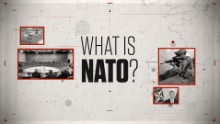US bombers arrive in Europe as Russia preps for war games
Washington (CNN)Two US B-1 bombers and one B-52 Stratofortress arrived in the United Kingdom on Wednesday for an annual international war games event taking place at the same time as a controversial Russian military exercise.
The long-range B-1s, from the 7th Bomb Wing at Dyess Air Force Base, Texas, and the B-52, from the Air Force Reserve Command's 307th Bomb Wing at Barksdale Air Force Base, Louisiana, landed at Royal Air Force Fairford in Gloucestershire. They will conduct flyovers in Slovakia and Poland before taking part in the Ample Strike 2017 exercises hosted by the Czech Republic, according to US European Command.
More than 30 aircraft, helicopters and unmanned aerial vehicles from eight allied nations are expected to conduct live-fire drills from August 28 to September 9, according to NATO.
"The exercise will focus on advanced air and land integration training, as well as strengthening interoperability between NATO ally and partner nations," US European Command said in a statement.
Photos: In the U.S. Air Force fleet
A-29 Super Tucano – An A-29 Super Tucano taxis on the flightline during its first arrival, Sept. 26, 2014, at Moody Air Force Base, Georgia. Afghan Air Force pilots trained on the planes that will be used in air-to-ground attack missions in Afghanistan.
Hide Caption
13 of 24
Photos: In the U.S. Air Force fleet
KC-135 Stratotanker – The four-engine KC-135 joined the Air Force fleet in 1956 as both a tanker and cargo jet. It can carry up to 200,000 pounds of fuel and 83,000 pounds of cargo and passengers in a deck above the refueling system. More than 400 of the KC-135s are flown by active, Air Guard and Reserve units.
Hide Caption
14 of 24
Photos: In the U.S. Air Force fleet
F-16 Fighting Falcon – The single-engine jet is a mainstay of the Air Force combat fleet. It can perform both air-to-air and air-to-ground missions with its 20mm cannon and ability to carry missiles and bombs on external pods. More than 1,000 F-16s are in the Air Force inventory.
Hide Caption
15 of 24
Photos: In the U.S. Air Force fleet
AC-130 gunships – The AC-130H Spectre and the AC-130U Spooky gunships are designed for close air support, air interdiction and force protection. Armaments on the Spectre include 40mm and 105mm cannons. The Spooky adds a 25mm Gatling gun.
Hide Caption
16 of 24
Photos: In the U.S. Air Force fleet
C-17 Globemaster transport – The four-engine jet joined the Air Force fleet in 1993 with a primary mission of troop and cargo transport. Each plane can carry up to 102 troops or 170,900 pounds of cargo. The Air Force has 187 C-17s on active duty, 12 in the Air National Guard and 14 in the Reserve.
Hide Caption
17 of 24
Photos: In the U.S. Air Force fleet
C-5 Galaxy transport – The C-5, with a wingspan of 222 feet, a length of 247 feet and a height of 65 feet, is the largest plane in the Air Force inventory and one of the largest aircraft in the world. The first versions of the four-engine jet joined the force in 1970. The Air Force expects to have 52 versions of the latest model, the C-5M, in the fleet by 2017.
Hide Caption
18 of 24
Photos: In the U.S. Air Force fleet
CV-22 Osprey – The Osprey is a tiltrotor aircraft that combines vertical takeoff, hover and landing qualities of a helicopter with the normal flight characteristics of a turboprop aircraft, according to the Air Force. It is used to move troops in and out of operations as well as resupply units in the field. The Air Force has 33 Ospreys in inventory.
Hide Caption
19 of 24
Photos: In the U.S. Air Force fleet
E-3 Sentry AWACS – AWACS stands for airborne warning and control system. This four-engine jet, based on a Boeing 707 platform, monitors and manages battle space with its huge rotating radar dome. The planes have a flight crew of four supporting 13 to 19 specialists and controllers giving direction to units around the battle space. The Air Force has 32 E-3s in inventory.
Hide Caption
20 of 24
Photos: In the U.S. Air Force fleet
KC-10 Extender – Based on the DC-10 passenger jet, the triple-engine KC-10 is a gas station in the sky with the ability to carry 75 people and 170,000 pounds of cargo. In its six tanks, the KC-10 can carry up to 356,000 pounds of fuel and dispense it while airborne. The Air Force has 59 KC-10s on active duty.
Hide Caption
21 of 24
Photos: In the U.S. Air Force fleet
T-38 Talon – The twin-engine jet trainer, used by the Air Force to prepare pilots for the F-15E Strike Eagle, F-15C Eagle, F-16 Fighting Falcon, B-1B Lancer, A-10 Thunderbolt and F-22 Raptor, first flew in 1959. Almost 550 are in the active force.
Hide Caption
22 of 24
Photos: In the U.S. Air Force fleet
U-2 – The single-engine, single-pilot U-2 is used for high-altitude reconnaissance and surveillance. Flying at altitudes around 70,000 feet, pilots must wear pressure suits like those worn by astronauts. The first U-2 was flown in 1955. The planes were used on missions over the Soviet Union during the Cold War, flying too high to be reached by any adversary. The Air Force has 33 U-2s in its active inventory.
Hide Caption
23 of 24
Photos: In the U.S. Air Force fleet
WC-135 Constant Phoenix – The four-engine WC-135 is used to fly through airspace to detect the residue of nuclear blasts. "The aircraft is equipped with external flow-through devices to collect particulates on filter paper and a compressor system for whole air samples collected in holding spheres," the Air Force says. It has two of these jets in the active force.
Hide Caption
24 of 24
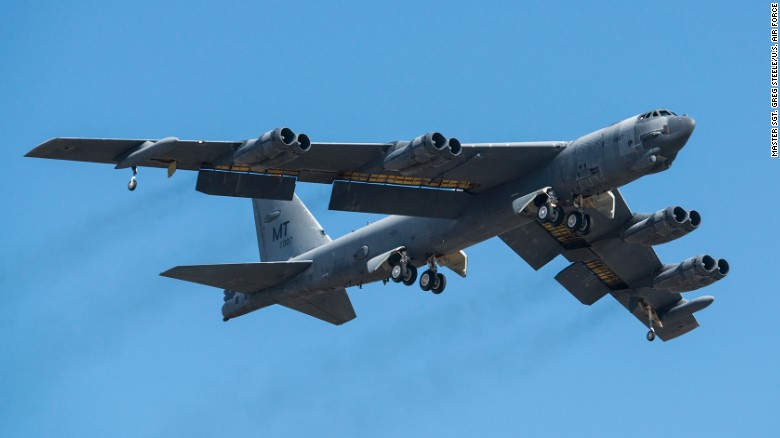
Photos: In the U.S. Air Force fleet
B-52 Stratofortress – The first versions of this long-range heavy bomber flew in 1954. A total of 744 were built, the last of those in 1962. The Air Force maintains 58 B-52s in the active force and 18 in the Reserve. A single B-52 can carry 70,000 pounds of mixed munitions, including bombs, missiles and mines. The eight-engine jets have a range of 8,800 miles.
Hide Caption
1 of 24
Photos: In the U.S. Air Force fleet
The single-engine F-35A is the Air Force's eventual replacement for the F-16 and the A-10. The supersonic jets, which will be able to conduct air-to-air and air-to-ground attacks, are just beginning to enter the Air Force fleet. Here, an F-35 Lightning II from the 34th Fighter Squadron at Hill Air Force Base, Utah, flys at Royal Air Force Lakenheath, England, April 15, 2017.
Hide Caption
2 of 24
Photos: In the U.S. Air Force fleet
F-22 Raptor – The twin-engine F-22 stealth fighter, flown by a single pilot and armed with a 20mm cannon, heat-seeking missiles, radar-guided missiles and radar-guided bombs, can perform both air-to-air and air-to-ground missions. The service has 183 of the Raptors, which went operational in 2005.
Hide Caption
3 of 24
Photos: In the U.S. Air Force fleet
B-2 Spirit bomber – The four-engine B-2 heavy bomber has stealth properties that make it hard to detect on radar. Flown by a crew of two, it has an unrefueled range of 6,000 miles and can deliver both conventional and nuclear bombs. Twenty B-2s are in the active inventory. They joined the fleet in 1997.
Hide Caption
4 of 24
Photos: In the U.S. Air Force fleet
B-1B Lancer bomber – The four-engine jet can fly at 900 mph and carry the largest payload of bombs and missiles in the Air Force inventory. The Air Force has 62 B-1Bs in the fleet.
Hide Caption
5 of 24
Photos: In the U.S. Air Force fleet
F-15 Eagle – The F-15 Eagle, the Air Force's main air superiority fighter, became operational in 1975. With a crew of one or two, depending on the model, the twin-engine jets are armed with a 20mm cannon along with Sidewinder or AMRAAM missiles. The Air Force lists 249 F-15 Eagles in its inventory.
Hide Caption
6 of 24
Photos: In the U.S. Air Force fleet
F-15E Strike Eagle – The Strike Eagle is a version of the air superiority fighter adapted to perform ground-strike missions. With a crew of two, the twin-jet can carry and deploy most weapons in the Air Force inventory and operate in any weather. The F-15E was first delivered in 1988. The Air Force lists 219 in its fleet.
Hide Caption
7 of 24
Photos: In the U.S. Air Force fleet
A-10 Thunderbolt – The A-10 Thunderbolt jets, nicknamed "Warthogs," are specially designed for close air support of ground forces. Key to their armaments is a 30mm Gatling gun. The pilot is protected from ground fire by titanium armor, and the plane's fuel cells are self-sealing in case of puncture.
Hide Caption
8 of 24
Photos: In the U.S. Air Force fleet
RC-135U – The RC-135U Combat Sent, based at Offutt Air Force Base, Nebraska, provides strategic electronic reconnaissance information to the president, secretary of defense, Department of Defense leaders and theater commanders.
Hide Caption
9 of 24
Photos: In the U.S. Air Force fleet
An F-15 Eagle takes off from the Andersen Air Force Base, Guam, flight line as two E-3 Sentries are seen in the background.
Hide Caption
10 of 24
Photos: In the U.S. Air Force fleet
C-130 Hercules transport – A C-130J Super Hercules from the 37th Airlift Squadron flies over Normandy, France, June 3, 2015. First delivered to the Air Force in 1956, the C-130 remains one of the service's most important airlift platforms. More than 140 are still in active units, with more than 180 in the National Guard and a hundred more in the Reserve. The C-130 is powered by four turboprop engines.
Hide Caption
11 of 24
Photos: In the U.S. Air Force fleet
OV-10 Bronco – A 21st Tactical Air Support Squadron OV-10 Bronco aircraft fires white phosphorus rockets to mark a target for an air strike during tactical air control training.
Hide Caption
12 of 24
Photos: In the U.S. Air Force fleet
A-29 Super Tucano – An A-29 Super Tucano taxis on the flightline during its first arrival, Sept. 26, 2014, at Moody Air Force Base, Georgia. Afghan Air Force pilots trained on the planes that will be used in air-to-ground attack missions in Afghanistan.
Hide Caption
13 of 24
Photos: In the U.S. Air Force fleet
KC-135 Stratotanker – The four-engine KC-135 joined the Air Force fleet in 1956 as both a tanker and cargo jet. It can carry up to 200,000 pounds of fuel and 83,000 pounds of cargo and passengers in a deck above the refueling system. More than 400 of the KC-135s are flown by active, Air Guard and Reserve units.
Hide Caption
14 of 24
Photos: In the U.S. Air Force fleet
F-16 Fighting Falcon – The single-engine jet is a mainstay of the Air Force combat fleet. It can perform both air-to-air and air-to-ground missions with its 20mm cannon and ability to carry missiles and bombs on external pods. More than 1,000 F-16s are in the Air Force inventory.
Hide Caption
15 of 24
Photos: In the U.S. Air Force fleet
AC-130 gunships – The AC-130H Spectre and the AC-130U Spooky gunships are designed for close air support, air interdiction and force protection. Armaments on the Spectre include 40mm and 105mm cannons. The Spooky adds a 25mm Gatling gun.
Hide Caption
16 of 24
Photos: In the U.S. Air Force fleet
C-17 Globemaster transport – The four-engine jet joined the Air Force fleet in 1993 with a primary mission of troop and cargo transport. Each plane can carry up to 102 troops or 170,900 pounds of cargo. The Air Force has 187 C-17s on active duty, 12 in the Air National Guard and 14 in the Reserve.
Hide Caption
17 of 24
Photos: In the U.S. Air Force fleet
C-5 Galaxy transport – The C-5, with a wingspan of 222 feet, a length of 247 feet and a height of 65 feet, is the largest plane in the Air Force inventory and one of the largest aircraft in the world. The first versions of the four-engine jet joined the force in 1970. The Air Force expects to have 52 versions of the latest model, the C-5M, in the fleet by 2017.
Hide Caption
18 of 24
Photos: In the U.S. Air Force fleet
CV-22 Osprey – The Osprey is a tiltrotor aircraft that combines vertical takeoff, hover and landing qualities of a helicopter with the normal flight characteristics of a turboprop aircraft, according to the Air Force. It is used to move troops in and out of operations as well as resupply units in the field. The Air Force has 33 Ospreys in inventory.
Hide Caption
19 of 24
Photos: In the U.S. Air Force fleet
E-3 Sentry AWACS – AWACS stands for airborne warning and control system. This four-engine jet, based on a Boeing 707 platform, monitors and manages battle space with its huge rotating radar dome. The planes have a flight crew of four supporting 13 to 19 specialists and controllers giving direction to units around the battle space. The Air Force has 32 E-3s in inventory.
Hide Caption
20 of 24
Photos: In the U.S. Air Force fleet
KC-10 Extender – Based on the DC-10 passenger jet, the triple-engine KC-10 is a gas station in the sky with the ability to carry 75 people and 170,000 pounds of cargo. In its six tanks, the KC-10 can carry up to 356,000 pounds of fuel and dispense it while airborne. The Air Force has 59 KC-10s on active duty.
Hide Caption
21 of 24
Photos: In the U.S. Air Force fleet
T-38 Talon – The twin-engine jet trainer, used by the Air Force to prepare pilots for the F-15E Strike Eagle, F-15C Eagle, F-16 Fighting Falcon, B-1B Lancer, A-10 Thunderbolt and F-22 Raptor, first flew in 1959. Almost 550 are in the active force.
Hide Caption
22 of 24
Photos: In the U.S. Air Force fleet
U-2 – The single-engine, single-pilot U-2 is used for high-altitude reconnaissance and surveillance. Flying at altitudes around 70,000 feet, pilots must wear pressure suits like those worn by astronauts. The first U-2 was flown in 1955. The planes were used on missions over the Soviet Union during the Cold War, flying too high to be reached by any adversary. The Air Force has 33 U-2s in its active inventory.
Hide Caption
23 of 24
Photos: In the U.S. Air Force fleet
WC-135 Constant Phoenix – The four-engine WC-135 is used to fly through airspace to detect the residue of nuclear blasts. "The aircraft is equipped with external flow-through devices to collect particulates on filter paper and a compressor system for whole air samples collected in holding spheres," the Air Force says. It has two of these jets in the active force.
Hide Caption
24 of 24

Photos: In the U.S. Air Force fleet
B-52 Stratofortress – The first versions of this long-range heavy bomber flew in 1954. A total of 744 were built, the last of those in 1962. The Air Force maintains 58 B-52s in the active force and 18 in the Reserve. A single B-52 can carry 70,000 pounds of mixed munitions, including bombs, missiles and mines. The eight-engine jets have a range of 8,800 miles.
Hide Caption
1 of 24
Photos: In the U.S. Air Force fleet
The single-engine F-35A is the Air Force's eventual replacement for the F-16 and the A-10. The supersonic jets, which will be able to conduct air-to-air and air-to-ground attacks, are just beginning to enter the Air Force fleet. Here, an F-35 Lightning II from the 34th Fighter Squadron at Hill Air Force Base, Utah, flys at Royal Air Force Lakenheath, England, April 15, 2017.
Hide Caption
2 of 24
Photos: In the U.S. Air Force fleet
F-22 Raptor – The twin-engine F-22 stealth fighter, flown by a single pilot and armed with a 20mm cannon, heat-seeking missiles, radar-guided missiles and radar-guided bombs, can perform both air-to-air and air-to-ground missions. The service has 183 of the Raptors, which went operational in 2005.
Hide Caption
3 of 24
Photos: In the U.S. Air Force fleet
B-2 Spirit bomber – The four-engine B-2 heavy bomber has stealth properties that make it hard to detect on radar. Flown by a crew of two, it has an unrefueled range of 6,000 miles and can deliver both conventional and nuclear bombs. Twenty B-2s are in the active inventory. They joined the fleet in 1997.
Hide Caption
4 of 24
Photos: In the U.S. Air Force fleet
B-1B Lancer bomber – The four-engine jet can fly at 900 mph and carry the largest payload of bombs and missiles in the Air Force inventory. The Air Force has 62 B-1Bs in the fleet.
Hide Caption
5 of 24
Photos: In the U.S. Air Force fleet
F-15 Eagle – The F-15 Eagle, the Air Force's main air superiority fighter, became operational in 1975. With a crew of one or two, depending on the model, the twin-engine jets are armed with a 20mm cannon along with Sidewinder or AMRAAM missiles. The Air Force lists 249 F-15 Eagles in its inventory.
Hide Caption
6 of 24
Photos: In the U.S. Air Force fleet
F-15E Strike Eagle – The Strike Eagle is a version of the air superiority fighter adapted to perform ground-strike missions. With a crew of two, the twin-jet can carry and deploy most weapons in the Air Force inventory and operate in any weather. The F-15E was first delivered in 1988. The Air Force lists 219 in its fleet.
Hide Caption
7 of 24
Photos: In the U.S. Air Force fleet
A-10 Thunderbolt – The A-10 Thunderbolt jets, nicknamed "Warthogs," are specially designed for close air support of ground forces. Key to their armaments is a 30mm Gatling gun. The pilot is protected from ground fire by titanium armor, and the plane's fuel cells are self-sealing in case of puncture.
Hide Caption
8 of 24
Photos: In the U.S. Air Force fleet
RC-135U – The RC-135U Combat Sent, based at Offutt Air Force Base, Nebraska, provides strategic electronic reconnaissance information to the president, secretary of defense, Department of Defense leaders and theater commanders.
Hide Caption
9 of 24
Photos: In the U.S. Air Force fleet
An F-15 Eagle takes off from the Andersen Air Force Base, Guam, flight line as two E-3 Sentries are seen in the background.
Hide Caption
10 of 24
Photos: In the U.S. Air Force fleet
C-130 Hercules transport – A C-130J Super Hercules from the 37th Airlift Squadron flies over Normandy, France, June 3, 2015. First delivered to the Air Force in 1956, the C-130 remains one of the service's most important airlift platforms. More than 140 are still in active units, with more than 180 in the National Guard and a hundred more in the Reserve. The C-130 is powered by four turboprop engines.
Hide Caption
11 of 24
Photos: In the U.S. Air Force fleet
OV-10 Bronco – A 21st Tactical Air Support Squadron OV-10 Bronco aircraft fires white phosphorus rockets to mark a target for an air strike during tactical air control training.
Hide Caption
12 of 24
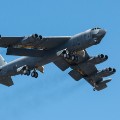
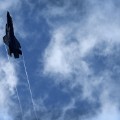
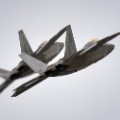
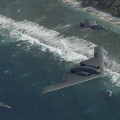
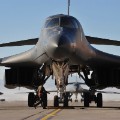
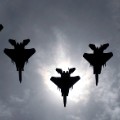
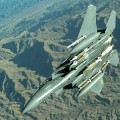
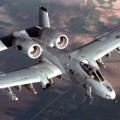

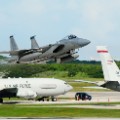
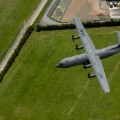
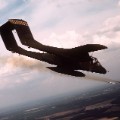
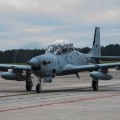
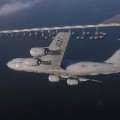
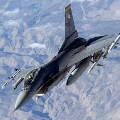
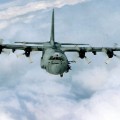
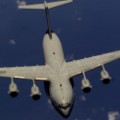

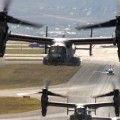
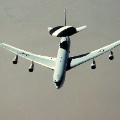

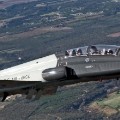

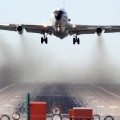
Unofficially, the joint military display is meant to serve as a not-so-subtle show of force aimed at Russia, which is preparing to conduct large-scale war games in Belarus next month.
Of all the major exercises on the Russian military calendar, "Zapad," which is Russian for "West," causes the most excitement and concern because it is the one that most closely resembles practice for invading Russia's neighbors, according to Keir Giles, a senior consulting fellow for the Russia and Eurasia program at Chatham House.
Russia's military exercises: Could they turn into war?
Held every four years, the exercise can even develop its own mythology: Much of the Western coverage said that the 2009 exercise ended with a simulated nuclear attack on Warsaw, Poland, even though there is no evidence at all from unclassified sources to suggest this was the case, Giles said.
"In Poland, Lithuania and especially Ukraine, some fear this year's Zapad could provide cover for preparing another Russian military adventure," Giles wrote in a recent op-ed for CNN.
But the US and its NATO partners have closely monitored Russian military maneuvers since the 2014 annexation of Crimea and routinely engage in military chest-thumping to deter potential Russian aggression.
Wednesday's announcement comes as President Donald Trump considers sending defensive aid to Ukraine. Defense Secretary James Mattis is expected to meet with the Ukrainian defense minister in Kiev on Thursday.
Tensions between the West and Russia have increased in recent years, in large part because of Russia's annexation of Crimea and its support for separatists elsewhere in eastern Ukraine.
In June, the US Air Force deployed long-range B-52 bombers and 800 airmen in support of joint exercises with NATO allies and partners taking place across Europe.
US F-35 fighters to train near Russia
The nuclear-capable B-52 Stratofortress took part in a series of joint exercises on Russia's doorstep -- specifically in the Baltic Sea, the Arctic and along Russia's border with several NATO partners.
The 185,000-pound B-52 is one of the oldest active aircraft in the US Air Force, having first entered service in the 1950s during the height of the Cold War. They were originally designed to serve as long-range, high-altitude intercontinental nuclear bombers that could strike deep into the Soviet Union.
The planes have been modified heavily since the end of the Cold War and have been upgraded with precision-guided missiles, electronics and high-tech sensors. Each aircraft can carry up to 70,000 pounds of bombs, mines and missiles, according to the Air Force's official fact sheet.
The highly versatile, supersonic B-1 is considered the backbone of the US long-range bomber fleet and carries the largest conventional payload of any aircraft in the US Air Force, but is no longer armed with nuclear weapons.
News Courtesy: www.cnn.com

